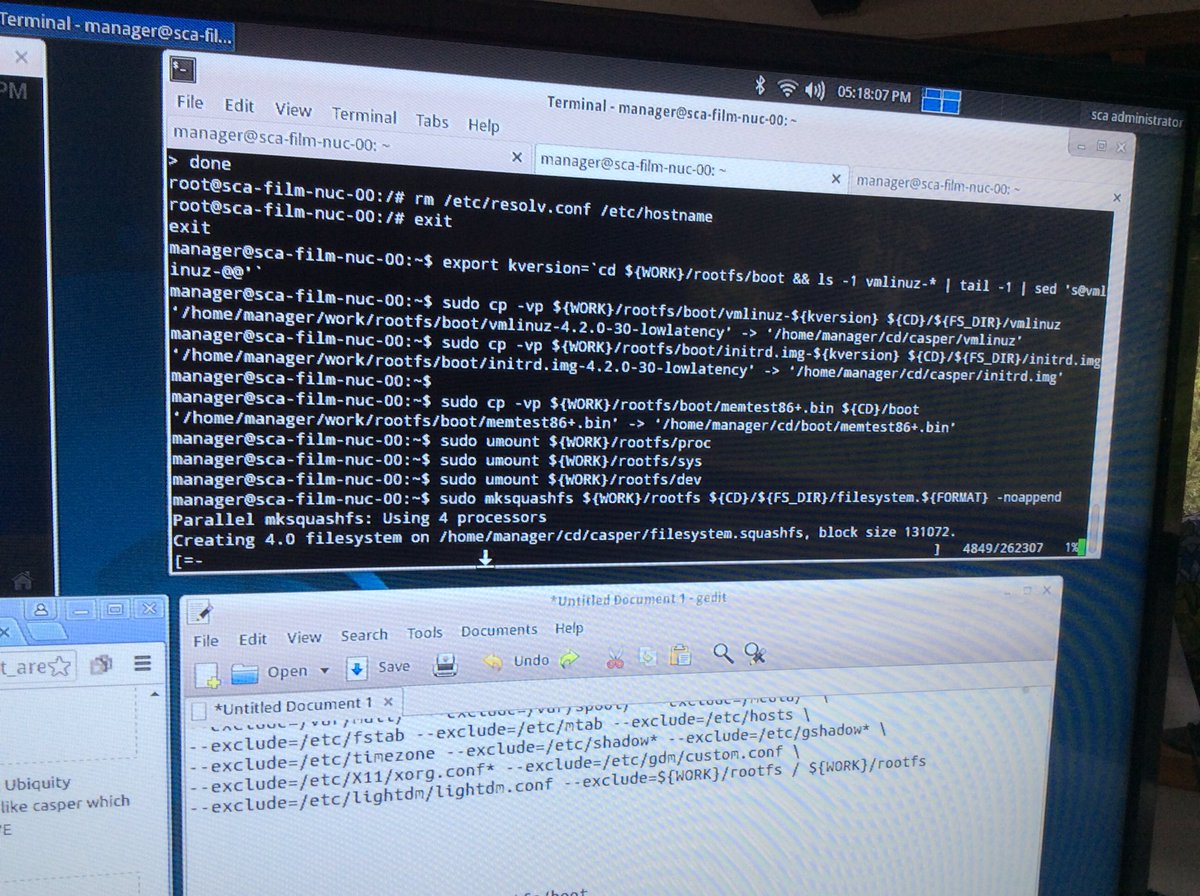For huge public archives, as well as for personal media archives, this is essential. The modular, compact system design of SquashFS is bliss. If you see the squashfs line among other file systems, this means you have successfully enabled SquashFS in your kernel. To mount a SquashFS, use the mount command's -o loop option with escalated privileges:. The procedure of getting SquashFS working, basically, consists of the following steps:. Also, compressed file systems are frequently needed for archiving purposes. In short, this means that you can freely modify and re-distribute the HOWTO under the main condition that you keep the author and copyright the article along.
| Uploader: | Dolmaran |
| Date Added: | 6 September 2008 |
| File Size: | 11.64 Mb |
| Operating Systems: | Windows NT/2000/XP/2003/2003/7/8/10 MacOS 10/X |
| Downloads: | 35805 |
| Price: | Free* [*Free Regsitration Required] |
Information such as filesystem size, inode table, directory table, number of duplicate files, UIDs, and GUIs are easily readable. Login as the root user or use sudo to run mount the filesystem with escalated privileges. Also, don't forget to add the file system image itself that is being created with mksquashfs I think you know the reasons for these exclusions.
Now you may reboot with your new kernel.
SQUASHFS - A squashed read-only filesystem for Linux
Like other filesystems, SquashFS is capable of de-duplicating the data passed to it, which helps it compress data further. Using 4 processors Creating 4. To create a SquashFS filesystem of the home directory of a user named Larry, the following command could be used:.

This error is should be self-explanatory. Notice the command provides an excellent summary of what went into the newly created home. This page was last edited on 22 Junemksquadhfs The procedure of getting SquashFS working, basically, consists of the following steps:. Also, compressed file systems are frequently needed for archiving purposes. If your kernel source is from a distro vendor, it may be already pre-patched with custom vendor patches, and patching with a SquashFS patch will almost surely not work, as SquashFS patches are made against original Linux kernels.
mksquashsf
Views Read View source View history. With this document, you'll learn how to prepare a SquashFS-ready Linux kernel, create a sqaushed file system and happily use it. This HOWTO describes the usage of SquashFS - a highly-compressed read-only file system for Linux, which is intended for use in tiny-sized and embedded systems, and anywhere else you'd want to use a compressed file system.
mksquashfs(1) — squashfs-tools — Debian jessie — Debian Manpages
When creating tiny-sized and embedded Linux systems, every byte of the storage device floppy, flash disk, etc. The modular, compact system design of SquashFS is bliss.
Set the desired support for the package by adjusting USE flags accordingly. The latest SquashFS release tree is 2. If everything went fine, typing mksquashfs at the shell prompt should print it's "usage" message.
Like most filesystems in Linux, the SquashFS filesystem tools come in a separate package. This document describes both these releases with proper notes given. The general command-line format for mksquashfs is:. Instructions for SquashFS release 1. Now let's make sure any further discussions will be clearer for mkequashfs to understand.
Squash FS Howto
Operations described here correspond to most cases where a read-only compressed file system can be used, whether you want it to be on a block device or in a file. You have to make sure there is an appropriate patch for your kernel version - it should be located in linux The full text of the licence is available at http: This information can be very helpful when attempting to gather specific information from the filesystem.
Note If the mount command fails, see the related entry in the troubleshooting section below.

If you see the squashfs line among other file systems, this means you have successfully enabled SquashFS in your kernel. For example, if some feature or parameter is different in these release trees, it will be written as follows: In order to read SquashFS, you need it supported in your kernel - just as if it was a reiserfs or ext3 file system.
Creation of SquashFS filesystems is performed with the mksquashfs command. To unmount the filesystem, use the umount command with escalated privileges:.

Комментариев нет:
Отправить комментарий